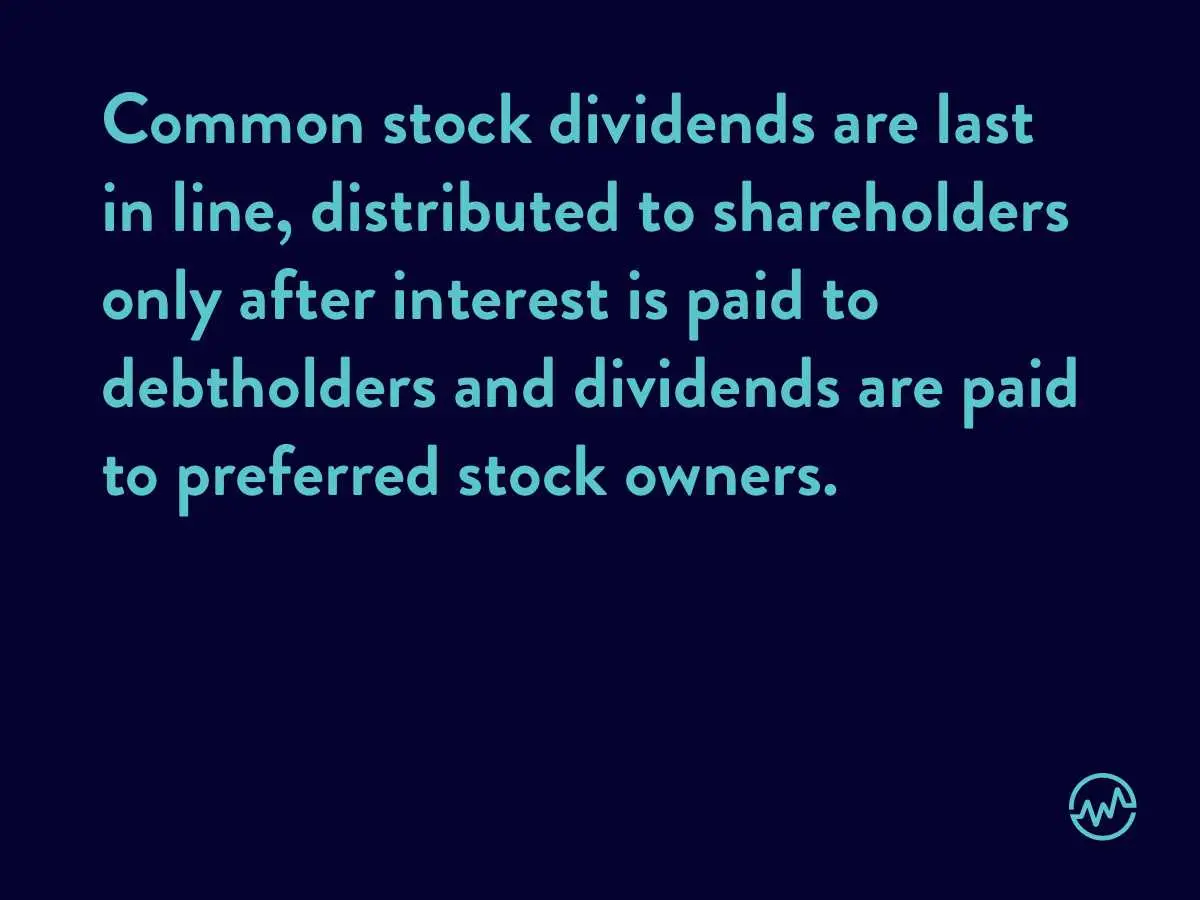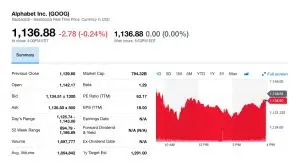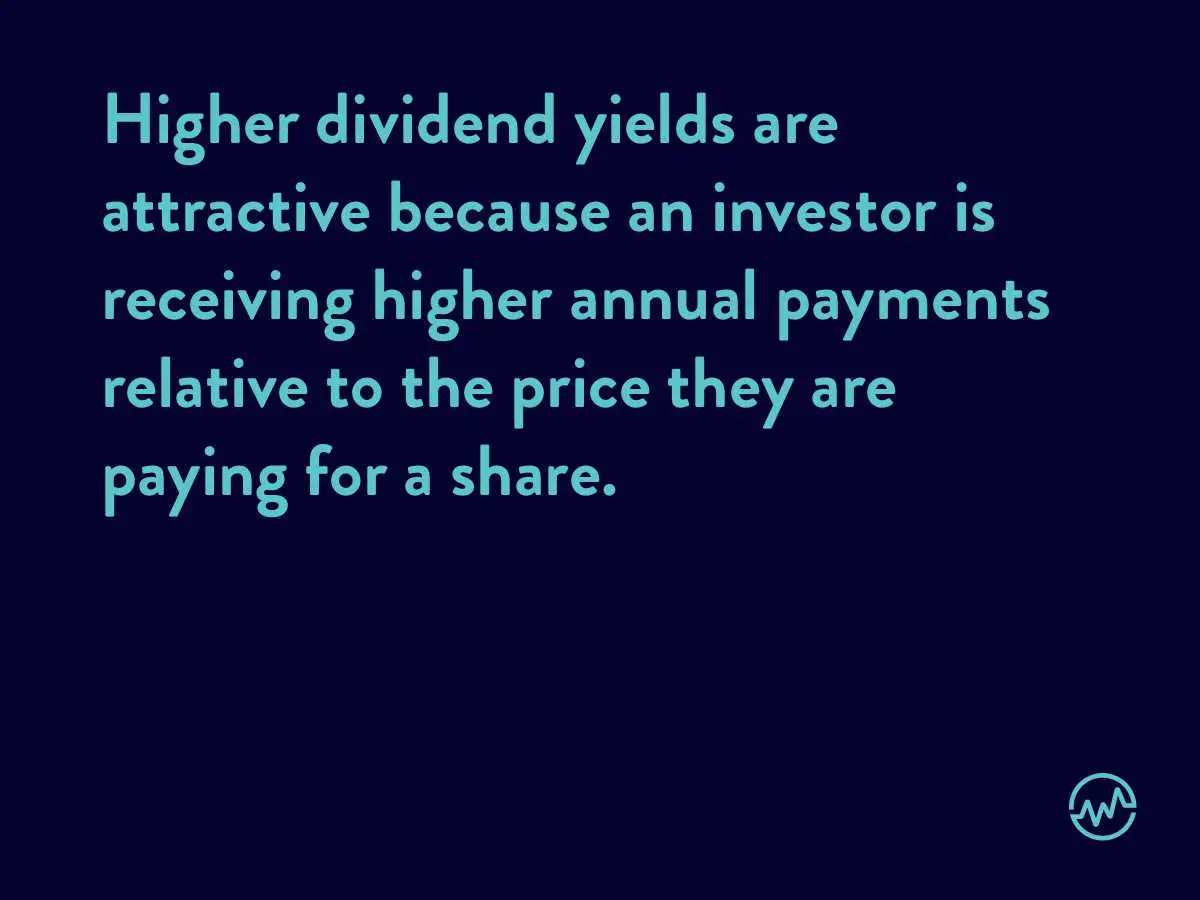Do you want to learn how to read a stock? Great! But where do you start? Just reading a stock quote itself can be overwhelming. Successful stock investing hinges on knowing how to read a stock. This article will help you do just that so that you can speak the stock lingo — fluently.overwhelming. Successful stock investing hinges on knowing how to read a stock. This article will help you do just that so that you can speak the stock lingo — fluently.
Successful investors don’t buy stocks recklessly. They understand stock investing fundamentals, and they learn to read a stock like a book — and make calculated decisions.
Read further to learn how to read a stock like a pro.
How To Read A Stock: Step 1
If you want to know how to read a stock, don’t immediately jump into the S&P 500.
Instead, let’s start from the ground and work our way up. This begins by looking at a company’s bylaws.
Corporations create their own rules for how they operate, and these rules are established by the board of directors at the time the corporation is formed.
Once the board determines the rules, they’re transcribed into a rule book.
A corporation’s approved rule book is called its “bylaws.” Bylaws can later be approved or amended by the corporation’s board of directors to reflect the changing needs of the organization.
Bylaws are the first place to learn about a company’s stock because they typically include an entire section devoted to stock. They usually specify:
- The rules for issuing stock
- The rules for transferring stock
- Powers and limitation of individual shareholders
- Descriptions of different classes of stock
Public vs. Private Stock
The next thing to understand about how to read a stock is that there are two variations of it: public and private.
Public stock is called “public” because it can be freely public-traded or transferred. But what about private stock?
First, private stock can rarely be traded without breaking the law. The US Securities and Exchange Commission (SEC) heavily limits the trading of private stock. In most instances, it can’t be traded.
But there’s an even bigger problem with trading private stock. The majority of companies prohibit the trading of their private stock while the company is private. The bylaws of private companies usually probit “assigning” or “transferring” (trading) their stock to anyone.
Private companies do this for a number of reasons, but the most important is to prevent strangers from gaining control of the company.
For example, if a person who owns 51% of a company trades their stock to a stranger, their company is put in jeopardy. The stranger now has enough voting power to elect a board member and thwart company decisions.
What Are Equity Securities?
Learning how to read a stock also begins with understanding why companies sell ownership positions in a company. Because when investors buy stocks, such as when they buy an IPO, they are buying ownership of the company.
This ownership of a company is called equity security.
Why do companies sell ownership positions? They use the capital they receive from selling equity for a variety of reasons. They sell ownership in the company for cash that they can use to:
- purchase assets
- fund research and development
- expand business organically
There are two ways to make money when owning a stock: by dividends or capital gains.
Dividends
When profitable, companies can choose to reward shareholders by paying dividends. Dividends are paid out quarterly and are recorded as annual dividends per share. Dividends can be paid both in cash and as additional shares.
Larger, mature companies usually pay out dividends because they have higher cash reserves and are profitable than smaller, faster growing companies.
Capital Gains
Capital gains is simply the profit that occurs when you sell an equity security that is worth more than when you bought it.
A capital loss occurs if you sell an equity security that is less valuable than when you bought it.
Capital gains depend on the market demand for the stock and increases when the future performance of the company looks optimistic. Capital gains also are affected by the broader economy and stock market performance
Different Types of Equity Securities
While most people think of common stock when they think of equity, equity securities also include preferred stock and warrants.
Each security differs in voting rights, dividend payouts, and claims to a company’s assets in the event of liquidation or bankruptcy.
Common Stock

Common shares are the most common form of equity. Common stock owners have a residual claim on firm assets if the firm is liquidated or shuts down. Common shareholders also govern the corporation with their voting rights.
Some of the main company decisions that shareholders of public companies vote on are:
- electing board members
- mergers decisions
- the selection of auditors
Common shareholders can attend earnings calls and annual meetings. If a shareholder cannot attend annual meetings, they can have someone else vote for them using their shares in what is known as “proxy” voting.
Many larger, mature public companies like Chevron and Verizon pay out dividends to common shareholders.

Firms are under no obligation to pay dividends on common stock. If you are a common stock owner, you can expect a higher return on investment compared to debt holders and preferred stock owners (which we’ll discuss next) for taking on additional risk by receiving payments last behind other shareholders.
Preferred Stock
Preferred stock has features of both common stock and debt. Like common stock, preferred stock does not have a contractual obligation to be repaid.
Preferred shareholders can expect consistent periodic dividends. It is an equity security with scheduled dividends that do not change over the security’s life.
Preferred stock dividends are distributed to shareholders before common stock but after interest is paid to debtholders. However, preferred stock doesn’t have voting rights and is not exposed to capital gains.
Preferred shares have a par value (the value of the stock as stated by the company, or the face value) and dividends are stated as a percentage of par value. For example, a 10% dividend based on par value of $100 pays out an annual $10 dividend.
Warrants
Warrants are like stock options. Warrants give the owner the right to buy a firm’s equity shares — usually common stock — at a fixed exercise price prior to the warrant’s expiration. You are not committed and don’t have to exercise your right to purchase the stock.
Warrants are difficult to trade, especially if they’re not listed on a stock exchange. The best way to go about trading stock warrants is by setting up an online trading account such as Fidelity and calling the broker to have them execute warrant trades.
The broker can also walk you through the pros and cons of investing in warrants.
Different Classes of Common Stock
Common stock may have different classes (i.e. Class A versus Class B). One class may have more voting power and may have a greater residual claim to assets compared to other shares. The dividend amounts may be different between classes as well.
Information on the ownership and voting rights of different classes of equity shares can be found in the company’s 10-K filings on the company’s website or on the SEC website — a document that we recommend you read before you invest in a particular company’s stock.
Risk and Return of Different Equity Securities
The WealthFit article “How to Perform a Risk Security” notes that risk is “the measurable possibility of losing the initial investment or that investment not gaining value. Risk is differentiated from uncertainty, which is not measurable.
As with any investment, investors must weigh the risks versus the rewards of the equity securities.
Preferred stock is less risky than common stock. Preferred stock pays a fixed, known dividend and receives other distributions before common stocks.
Preferred stock’s par value (or face value) is more predictable than the common stock’s price. Because preferred stock isn’t as risky as common stock, investors can expect to see lower returns.
How to Read A Stock Quote
Learning how to read a Stock Quote can be intimidating. It’s easy enough to read the company name, symbol, and last market price. But the Stock Quote also comes with a lot of supplemental information that is not as straightforward.
Learning how to read a Stock Quote is a meaningful routine for those looking to make an investment decision.
When pulling up a Stock Quote on Yahoo Finance, Google, or your online trading platform, they will have very similar formats.
A basic quote provides information such as its bid and ask price, open and close price, volume, market cap, and important ratios.


(from Yahoo Finance: It’s not as intimidating as it seems)
Some information is more important than others, and there are plenty of gems in the Stock Quote.
Understanding and analyzing the most important data helps investors make a more educated transaction.
How To Read A Stock Basics: Stock Symbol, Market Price, and Volume
At the top of any Stock Quote is the following:

The Stock or Ticker Symbol is a unique identifier used for publicly traded shares of companies. For example, Facebook’s symbol is (FB) and Apple’s symbol is (AAPL).
The market price listed at the top of the Stock Quote is the last transaction price between a buyer and seller on an exchange and is constantly changing throughout the day.
Price ranges for the day and for the past 52 weeks show the highest and lowest stock prices for a given time period.
Previous Close and Open prices show the prices at the end of the previous day and the beginning of the day. These stats change daily.
The volume is usually defined as the number of shares traded on any given trading day. Daily volume can be compared against average volume to see if the stock is being traded more or less than average.
Bid vs. Ask Prices
Bid and Ask prices are simply the prices available to buy and sell shares at.
Bid price is the price the stock is bought at.
Ask price is the price the stock is sold at.
For equity securities, traders must buy securities at the highest price or the bid price and sell securities at the lowest price of the ask price.
Bid-Ask Spread
Bid-ask spread is the difference between the bid and ask prices. The broker receives a commission as a percentage of the bid-ask spread. The bid-ask prices quoted are said to make the market for that stock.
The bid-ask spread is lower for securities trading at higher volumes. More trades mean investments are more liquid and the market for that stock is more efficient.
Stocks with less trading volume have higher bid-ask spreads. Markets are less efficient, and prices fluctuate more often.
“Penny Stocks”, which are stocks of small companies traded infrequently, are a great example. The bid-ask spread is higher. Brokers make a higher commission of selling these stocks because they are harder to sell.
Market Capitalization
Another important element when thinking about how to read a stock: market capitalization.
Market cap is another word for equity value. It is the value represented by a company’s shares outstanding multiplied by a company’s current share price.
Market cap is also considered the market value of equity and reflects the expectations of investors about future performance. Market cap is always changing.
Market cap provides a measure of relative size compared to other companies. Companies with larger market caps are usually considered more stable and prone to less price fluctuations than smaller companies.
Companies are categorized based on their market cap:
- Mega cap: $200 billion +
- Large cap: $10 billion to $200 billion
- Mid cap: $2 billion to $10 billion
- Small cap: $300 million to $2 billion
- Micro cap: $50 million to $300 million
- Nano cap: less than $50 million
If you want to learn how to quickly calculate market cap — to find the value of any business — click right here.
Beta
Beta, a measurement of risk, is included in the Stock Quote. The S&P 500’s Beta of 1.0 represents the average risk of all assets in the market.
A Beta value greater than 1.0 means the security is more volatile than the market whereas a Beta value lower than 1.0 means the security is less volatile than the market.
Beta can be used to compare a firm’s perceived risk versus key indices, different industries, and comparable companies.
Beta is explored in more detail in the WealthFit article How to Perform a Risk Security.
Ratios
Stock Quotes include key ratios that are used for valuing a company.
Ratios use standardized metrics that are comparable across industries, stock indices, and comparable firms. Ratios are easily calculated and can be used as a quick time-series calculation.
While ratios can’t solely be used to make investment decisions, they are helpful tool in a detailed analysis and can be useful for predicting stock returns.
Earnings Per Share (EPS)
EPS is calculated by dividing a company’s corporate earnings by its shares outstanding. For example, if a company has $50 million in earnings and 10 million shares issued, its EPS is $5/share.
The higher the EPS, the more value is considered unlocked for shareholders. EPS is used in the price-earnings ratio described below.
Price ratios used for valuation include:
Price-earnings
The P/E ratio is the firm’s stock price divided by earnings per share. The P/E ratio is widely used by analysts and the most common ratio included on a Stock Quote.
Price-sales
The P/S ratio is the firm’s stock price divided by sales per share.
Price-book Value
The P/B ratio is a firm’s stock price divided by the book value of equity per share.
Price-cash Flow
The P/CF ratio is a firm’s stock price divided by cash flow per share. Analysts use both operating cash flow and free cash flow.
A stock is considered more expensive if these price ratios are higher. It means that an investor is paying more relative to profitability.
Dividend and Dividend Yield
The dividend is recorded as annual dividends per share even though they may be distributed quarterly. For example, for a dividend on a Stock Quote is $2.00, the investor is being paid 50 cents per quarter.
Dividend yield is a ratio of a company’s annual dividends divided by its share price. Dividend yield is written as a percentage.
For example, if an annual dividend is $1.00 per share and the stock price is $20.00, the dividend yield is 5%.

It’s one thing to know how to read a stock. It’s another to know how to analyze a stock. But in order to make a profit, an investor needs to know how to buy and sell stocks as well. investor needs to know how to buy and sell stocks as well.
With online trading platforms, trading stocks is easier than ever. Investors can set up online trading accounts through brokers such as Fidelity and Charles Schwab in less than five minutes.
Investors need to set up a brokerage account to trade. Broker-dealers are FINRA licensed to make trades and can execute orders in the appropriate market or system.
Brokers differ in how orders are executed, services offered, and fees charged. Most full-service brokerage firms provide trade execution services, portfolio management, investment advice, and financial planning.
Make sure to do due diligence before deciding what broker to use.
Execute An Order
Once an investor learns how to read a stock and wants to make a trade, there are a few instructions an investor must consider on his or her way to becoming an expert trader.
Trading on an online brokerage account is straightforward. When trading online, the dashboard will show cash available to trade, stock symbol, action, quantity of shares, order type, and validity instructions. Each trade execution option is a tool used to maximize value.
Symbol, Action, and Quantity
These instructions are intuitive. The stock symbol identifies what stock to trade, the action determines whether to buy or sell shares, and the quantity is the number of shares an investor wants to buy or sell.
Order Types and Validity Instructions
While market forces can be unpredictable, the type of order and instructions placed can provide an investor with a clear understanding of how the trade will be executed in the market. These orders help investors get the results they want.
There are multiple ways to buy and sell shares to trade stocks more effectively. The most common orders are market and limit orders:
Market Order
Instructs the broker to execute the trade as soon as possible at the best price.
Limit Order
Limit orders set a minimum price to sell orders and a maximum price to buy orders.
For example, say an investor wants to sell a limit order at $10 per share, but it’s currently trading at $9 per share. The trade won’t execute until the share price rises above $10 per share.
If an investor wants to buy a limit order at $10 per share, and the share price is trading at $11 per share, the trade will automatically execute when the share price drops below $10 per share.
Pros and Cons of Market and Limit Orders
Market orders allow a trader to execute an order quickly and are good when the trader believes the market price is a favorable price. However, if the price fluctuates, market order bids can execute at higher or lower prices than the trader would prefer.
While limit orders ensure the trade is made at a more favorable price, the trade may never execute if it doesn’t hit the maximum or minimum price set in the limit order. Limit orders reduce uncertainty, but they risk not being fulfilled.
Validity Instructions
Traders set validity instructions (also known as “Time in Force” instructions) to determine what time the trade will be executed. There are multiple instructions that give traders more control over when to make trades:
- Day orders: Day orders are trade orders that will expire if unfilled by the end of the trading day
- Fill-or-kill orders: Fill-or-kill orders are canceled if they cannot be filled immediately
- Good-till-cancelled (GTC): GTC orders are orders that last until filled
- Good-on-close: Good-on-close orders are filled at the end of the trading day
Market orders and validity instructions establish controls that allow investors to sleep easy at night. These trading tools can ensure investors are buying and selling stocks at the preferred price and time.
How To Read A Stock
Understanding how to read a stock means understanding the tremendous amount of data found in a stock quote. Knowing the different pricing mechanisms and metrics prepares an investor to make a trade.
These financial snapshots can help confirm a good investment decision and root out any surprises.
Confidence, which comes from financial education, is key when an investor is seconds away from hitting the ‘buy’ button.
Knowing how to read a stock and how to properly execute a trade are the first steps toward gaining that confidence and adding stocks to your investment portfolio.
Know that you know how to read a stock, continue your investing education with the following free resources:














